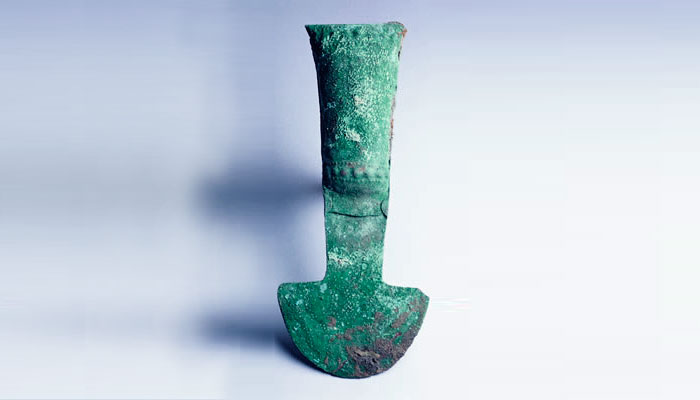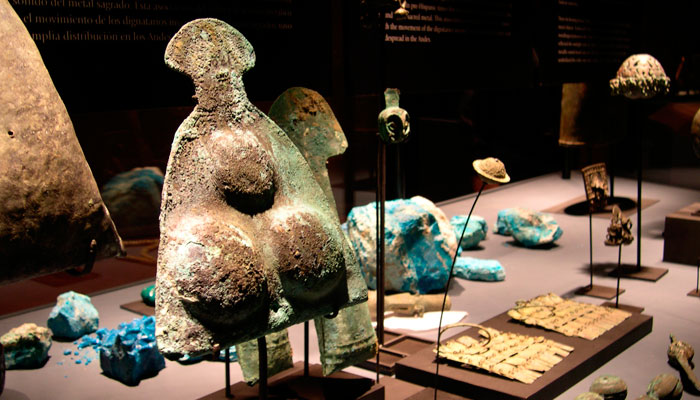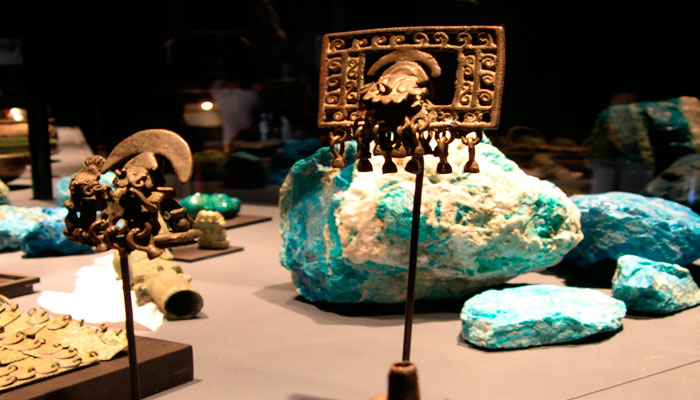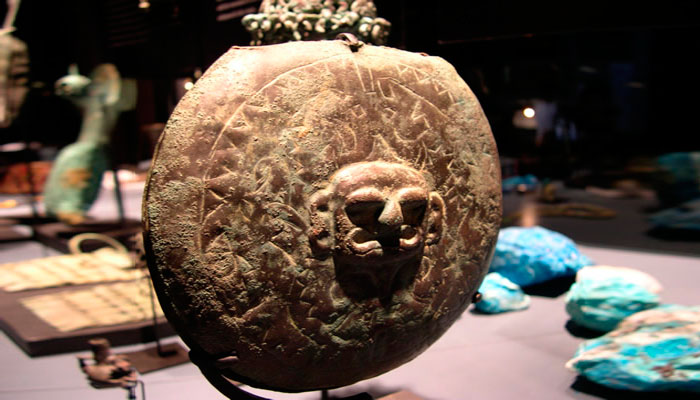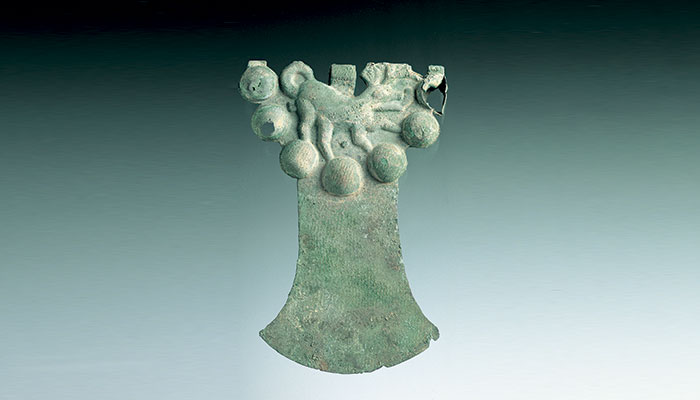The Art of Copper in the Andean World – 2004
- From stone to jewel
- Metal tools
- Chromatic palette of copper
- Metallic sounds and glitters
- Bronze bells
- Metals for taking away life
- Copper on the shaman’s altar
- Copper in the andean iconography
- Metallic bodies
- The face of death
- Food for men
- Food for the gods
- The power of the cailles
- Epilogue
- Galería de fotos
Metallic sounds and glitters
Metallic sound reinforces the idea of the sacred and political importance of metal objects in the Andes. Many staffs, litters and ornaments from the Vicús, Moche, Chimú and Inka cultures sport bells, that make a distinctive metallic sound. This was a unique and characteristic sound in the pre-Columbian acoustical space and was produced merely by moving the object.
Unlike other metal objects that do not make sounds, sonorous objects generally have no ornamentation. Their smooth and shiny surface allows them to act as mirrors, reflecting light. These reflections also add to the movement, multiplying and invading the surroundings with heightened shine, above all in the case of small movable metal elements that dangle from many of these objects.
The accounts of the first Spanish chroniclers note that the movement associated with the nobility and with the deities is a very delicate matter in the Andes, and this association continues today in religious festivals, where the “walk” with a holy figure occurs amidst the music and glitter of the mirrors. In pre-Hispanic times this movement was emphasized by the sound of the sacred metal. This association of metallic color and sound with the movement of the dignitaries invested with sacred attributes, was widespread in the Andes.




































